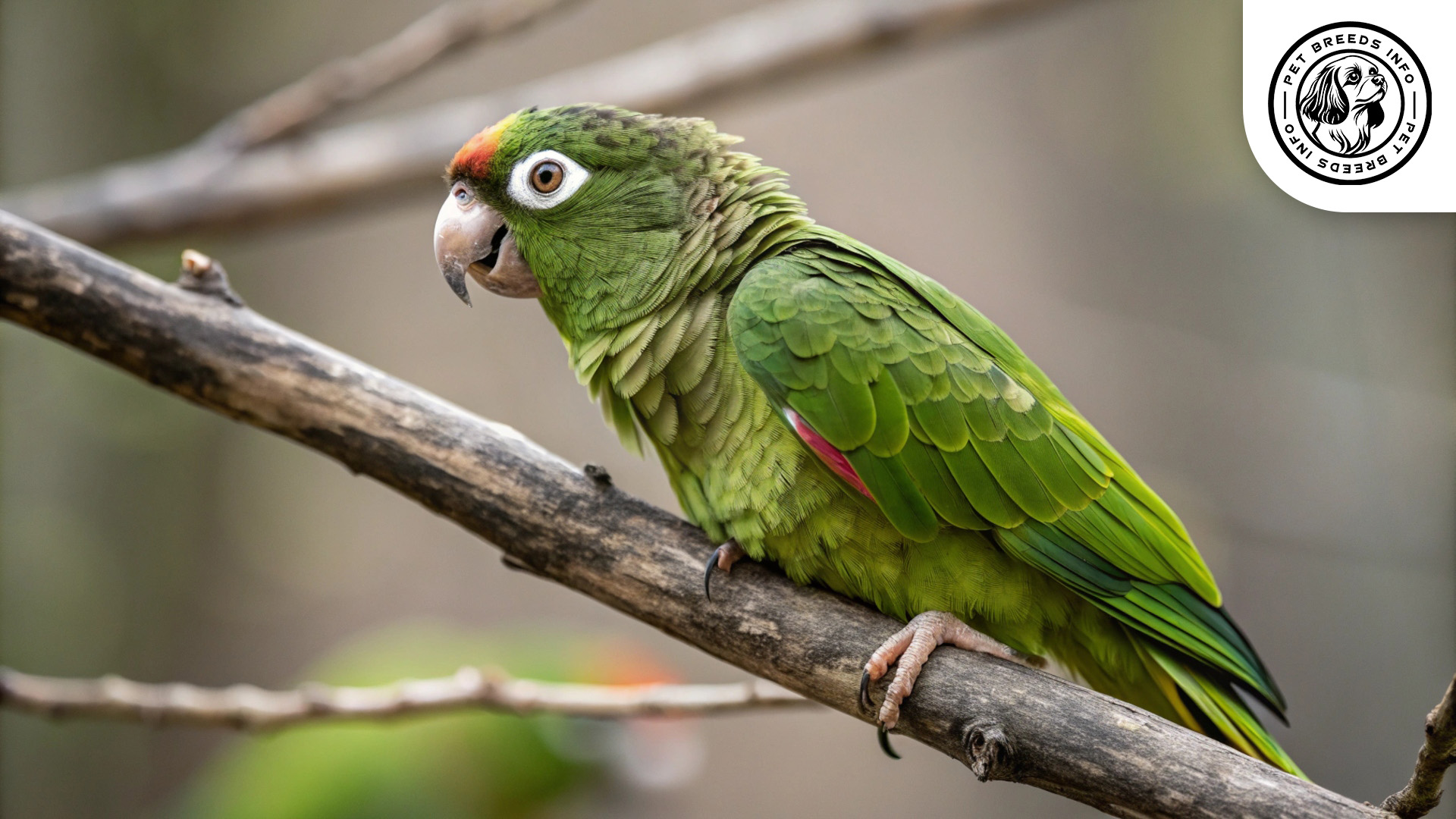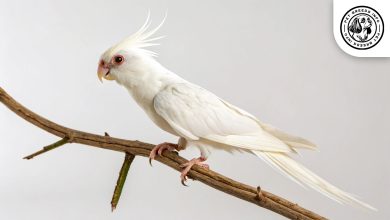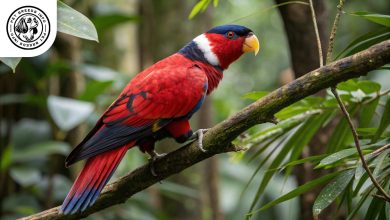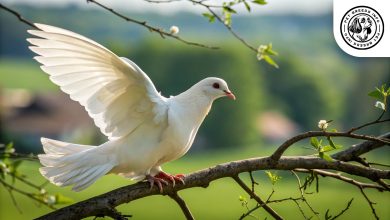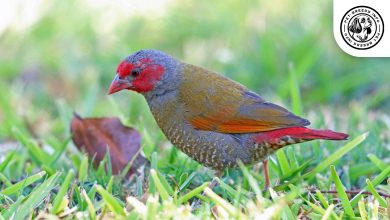White-eyed Conure Bird: Personality, Lifespan, Food & Care
General Introduction of the Breed
The White-eyed Conure (Psittacara leucophthalmus), also known as the White-eyed Parakeet, is a medium-sized parrot native to South America. It can be found in countries such as Brazil, Bolivia, Paraguay, Venezuela, and Argentina.
Historically, the White-eyed Conure has been admired for its playful nature and ability to bond with humans. This species thrives in rainforests, savannas, and urban areas, often forming large flocks in the wild.
Table of Contents
| Common Name | White-eyed Conure / White-eyed Parakeet |
| Scientific Name | Psittacara leucophthalmus |
| Origin | South America (Brazil, Bolivia, Argentina, etc.) |
| Size | 30–34 cm (12–13 in); ~150–190 grams |
| Lifespan | 20–30 years |
| Egg Color | White |
| Clutch Size | 3–5 eggs |
| Temperament | Social, playful, affectionate |
| Cold-Hardy | Moderately – protect from drafts |
Physical Characteristics
The White-eyed Conure typically measures around 30 to 34 cm (12 to 13 inches) in length, with a wingspan of approximately 43 cm (17 inches). It weighs between 150 and 190 grams.
This conure has a predominantly green plumage with slight yellowish shades on the underside. Some individuals may have small red markings on their wings. The distinguishing feature of this species is the white ring encircling its eyes, which contrasts with its dark brown irises.
It has a strong, curved beak that aids in climbing and foraging, and its tail is long and tapered. Like most parrots, its zygodactyl feet (two toes facing forward and two facing backward) enable a strong grip.
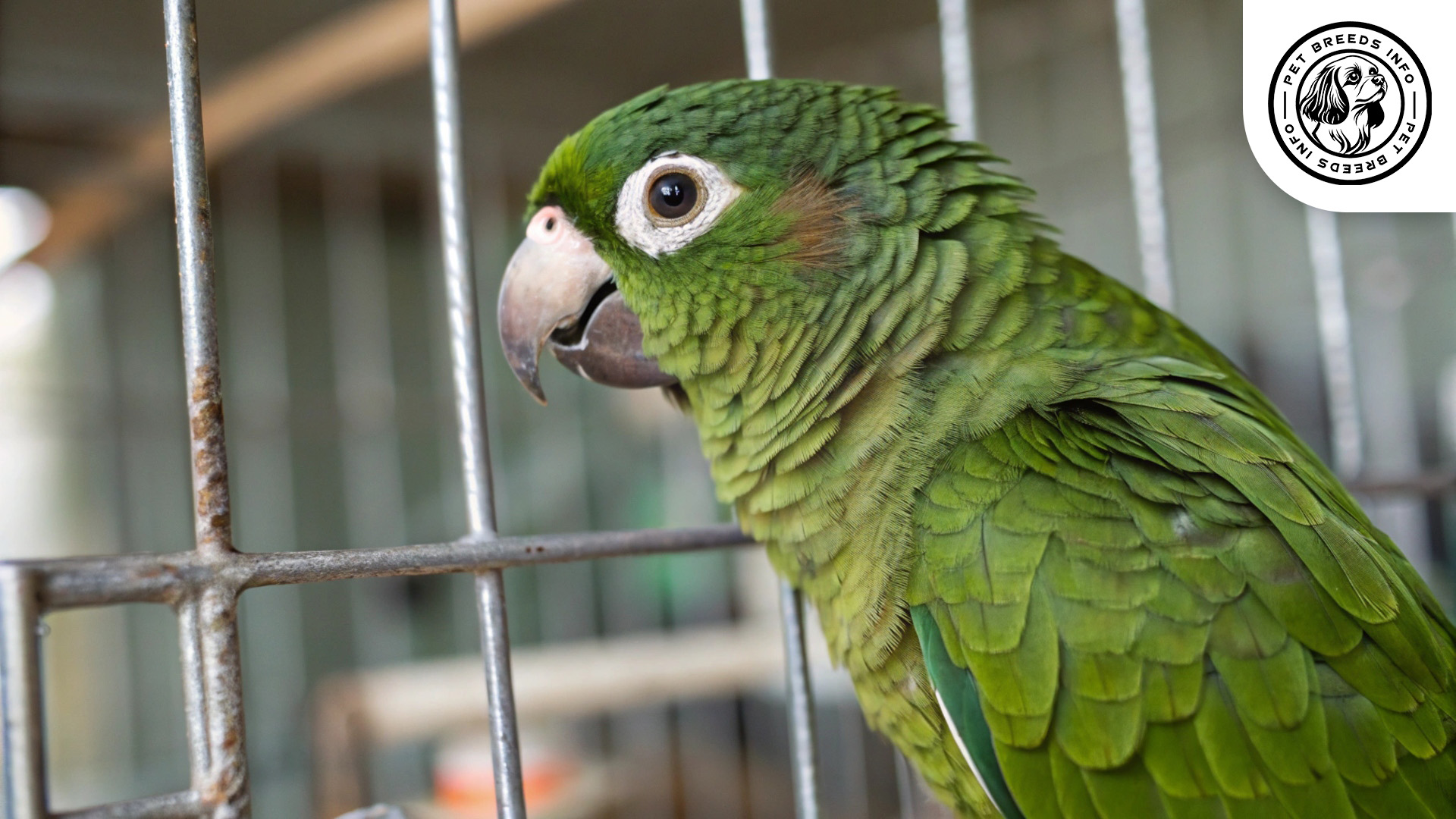
Personality and Temperament
White-eyed Conures are social, intelligent, and playful birds. They enjoy learning new tricks and can mimic certain sounds and words with practice.
They have a high energy level and require regular stimulation to stay happy. Without sufficient interaction, they can become bored and exhibit destructive behavior.
These conures form strong bonds with their owners and thrive on companionship. They are affectionate but can be noisy, making them less ideal for noise-sensitive households.
They generally get along well with family members and other birds but may require supervision when interacting with small children or unfamiliar pets.
Read More: Peach-faced Lovebird
Care and Maintenance Requirements
White-eyed Conures require a spacious cage with enough room to move freely. Daily out-of-cage activities are essential for their mental and physical well-being.
These birds are sturdy and can adapt to different climates, but they should be protected from extreme cold and drafts.
Grooming includes regular nail trims, beak maintenance, and bathing opportunities. They enjoy misting or bathing in shallow water.
Providing a variety of chew toys is essential to keep their beak healthy and prevent unwanted chewing of household items.
Diet and Nutrition
A balanced diet for a White-eyed Conure consists of high-quality pellets, fresh fruits, and vegetables. They benefit from seeds and nuts in moderation.
Avoid feeding them avocado, chocolate, caffeine, alcohol, and processed foods, as these can be toxic.
They should be fed twice daily, with portion sizes adjusted based on their activity level and metabolism.
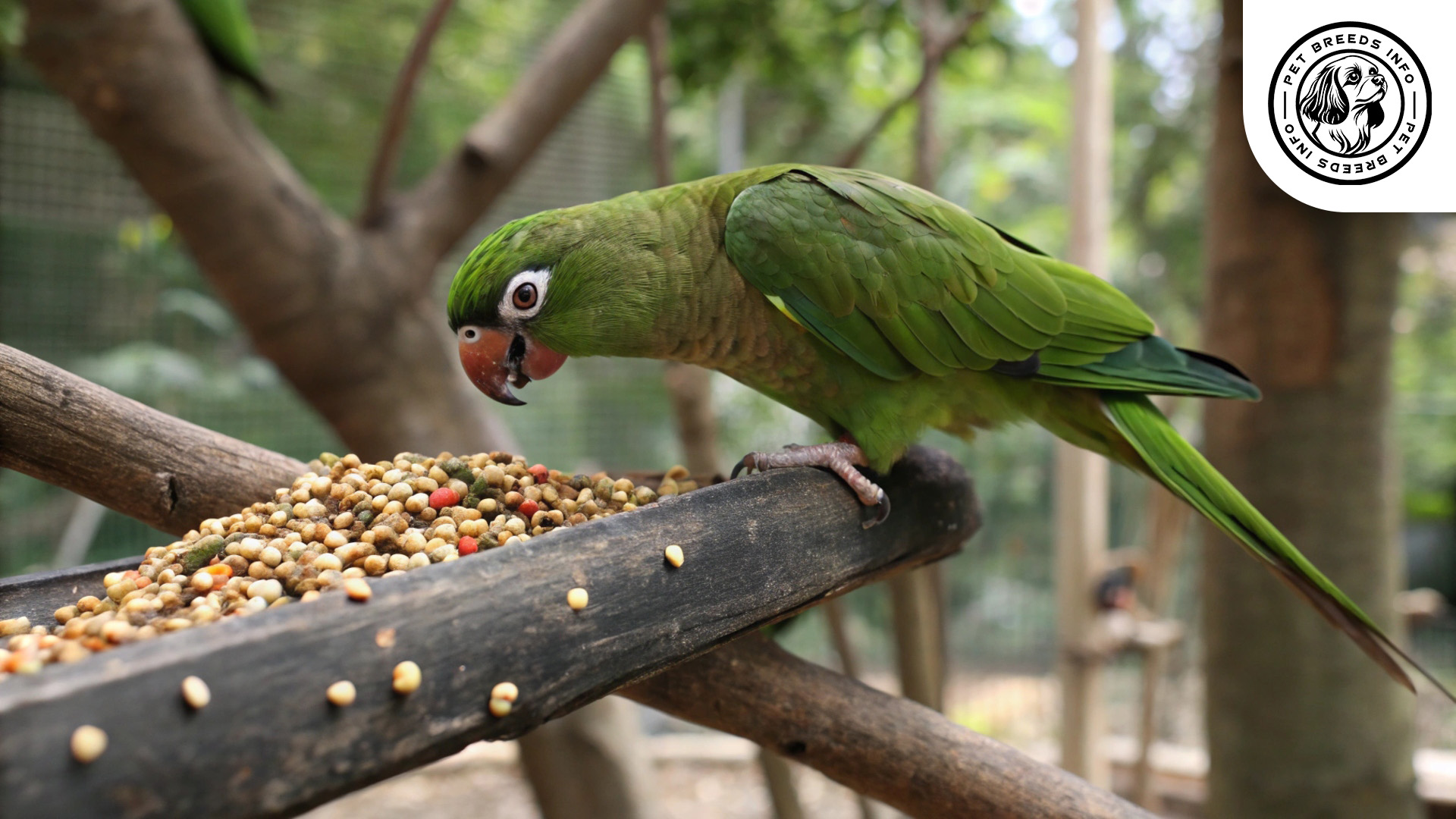
Health and Common Medical Issues
Common health concerns in White-eyed Conures include respiratory infections, feather plucking due to stress, and psittacine beak and feather disease (PBFD).
Regular veterinary check-ups are important to maintain their health. Proper nutrition, mental stimulation, and clean living conditions can help prevent many health issues.
The average lifespan of a well-cared-for White-eyed Conure ranges from 20 to 30 years.
Training and Behavior Management
Training a White-eyed Conure requires patience and consistency. They respond well to positive reinforcement techniques such as treats and praise.
Teaching basic commands like recall training, step-up, and speech mimicry can be enjoyable for both the bird and the owner.
Early socialization helps prevent aggressive or territorial behavior.
Read More: Pekin Duck Bird
Interaction with Other Animals and Humans
White-eyed Conures are affectionate with their human companions and enjoy interactive play. They bond closely with their owners and seek constant companionship.
They can coexist well with other birds when introduced properly but might become territorial if not supervised.
Due to their vocal nature, they may not be suitable for households that require a quiet pet.

Price and Availability
The cost of a White-eyed Conure varies based on location, breeder reputation, and availability. Prices typically range from $300 to $600.
Adopting from reputable rescues or breeders ensures health and good temperament. It is important to avoid purchasing from unethical sellers or illegal wildlife trade.
Read More: Yellow-faced Parrotlet Bird
Conclusion and Final Thoughts
The White-eyed Conure is an excellent companion for bird enthusiasts willing to invest time and effort into their care.
Their playful and affectionate nature makes them suitable for both individuals and families, but their noise level may not be ideal for all households.
Potential owners should consider their long lifespan, social needs, and maintenance requirements before choosing this bird.
With the right care, a White-eyed Conure can be a loving and entertaining pet for many years.
FAQ
How big does a White-eyed Conure get?
They grow to about 12–13 inches in length and weigh around 150–190 grams.
Are White-eyed Conures good for beginners?
Yes, but only for committed owners—these birds need daily attention, mental stimulation, and can be quite vocal.
Can a White-eyed Conure talk?
They can mimic some sounds and words, but they’re not the best talkers compared to other parrots.
Do they get along with other pets?
Yes, with proper introductions, they can get along with other birds and pets, though supervision is necessary.
What should I feed my White-eyed Conure?
A mix of pellets, fresh fruits, vegetables, and occasional seeds or nuts is ideal. Avoid chocolate, avocado, and caffeine.
